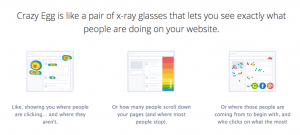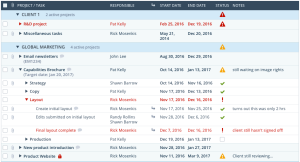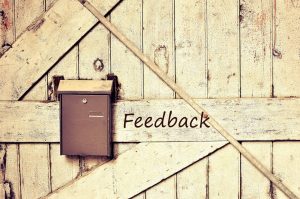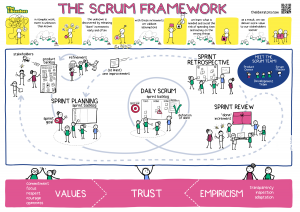— April 19, 2019
To understand how fundamental trust truly is, we have to go back to the beginning.
As it turns out, we humans are hardwired to seek situations in which we feel trust, because our brains release high levels of oxytocin when we experience trust.
Oxytocin is a neurotransmitter that makes us feel good and gives us positive feelings about the people around us. As a result, we are able to work through our disagreements and not harbor grudges. We cooperate in extraordinary ways.
Trust is based on the principle of predictable returns.
If I do this for you, I’ll get this in return. The shorthand term is “reciprocity.” In his book How the Mind Works, Steven Pinker shows exactly how our brains are wired to respond to actions that build trust. He points out that reciprocity is an evolutionary strategy, hardwired into our genes. If you give me a hand, I’ll return the favor—especially if there’s a strong likelihood of repeated transactions with you in the future.
Trust hinges on having enough information over time to determine whether reciprocity occurs.
Pinker shows that our brains are hardwired to detect whether reciprocity and trust exist—or whether we’re getting the short end of the stick. This “cheater meter” is working in every conscious moment. If I think that you’ve treated me fairly, in ways I predicted, my cheater meter is in the green. If not, it swings into the red.
You may not know it, but our cheater meters are working all the time.
When we feel trust, our cheater meter fades into the background. Everything feels good (that’s the oxytocin talking). But our cheater meters emerge the moment we experience distrust. Did your boss not include you in a decision that affects you? Did your peer forget to inform you about a meeting with one of your employees? Think about it. You know vividly when you distrust someone.
Your cheater meter is a finely tuned instrument—one that you may not have even known existed.
It’s working right now as you read this. Do you feel you’re getting useful information? Is this what you hoped to be learning? That’s your cheater meter at work.
Each of us sets our cheater meter a bit differently.
This is particularly evident at the start of a relationship. Some people trust until they have data that convinces them otherwise. Some people distrust until they see evidence that they can trust. And a small percentage are on the margins: they either trust too much or rarely feel trust. Look at the following table and think about where your cheater meter is set.

If you said “trust until ” you join approximately 45 percent of the population who feel that way. Another 45 percent say they “distrust until.” The remaining 10 percent occupy the two extremes, again in roughly even percentages.
People have different trust orientations. That’s important to remember as you think about strategies for building trust.
Another dimension of trust has to do with expectations. Some have very high expectations and thus are easily disappointed. Others have low expectations and don’t feel particularly bothered when their expectations aren’t met.
So how do you build trust?
At the most basic level, trust is about reciprocity.
Reciprocity means getting treated fairly. In a work setting, this means people feel trust when they are paid fairly for the work they do. They feel trust when they are recognized for a job well done. Reciprocity hinges on predictability. If you’ve said something will occur if certain expectations are met, you’d better adhere to the deal—otherwise, you’ll set off a chain reaction of distrust.
Trust is not just about reciprocity. It’s about speed.
In a world where information flows at the speed of light, the speed of trust is the speed at which a colleague voluntarily communicates information that is important for you to know. For example, if I have the inside scoop on a competitor’s new marketing push, the speed of trust is reflected in how quickly I send you that information.
Trust obviously depends on communication.
Trust means that every employee, starting at the top, knows the organization’s goals. Trust means that roles and responsibilities are clear and that the rules for dealing with conflicts are well understood. Trust means holding people accountable for what they do and don’t do. High levels of trust enable people to listen to each other’s views, to talk about tough issues, to share information, and to work together as a team.
Another important element of trust is transparency—letting people know what’s going on even if the news is not all good.
W. L. Gore, the maker of Gore-Tex fabric, provides regular updates to every employee on how the company is doing in meeting its goals. Senior management goes out of its way to communicate what’s going on with revenues and profits. Among mid-sized companies, it’s consistently ranked number one in Fortune magazine’s survey of best companies to work for. It’s also one of the most profitable.
Transparency also builds trust with customers and shareholders. Transparent pricing is one example. Anyone who bought a car in the twentieth century was accustomed to dealing with an informational black hole. In the twenty-first century, auto dealers built trust with their customers by being open about their pricing and profits—and the experience is infinitely better. eBay builds trust by showing where your bid stands in relation to others and providing tips on how to place the winning bid. Google builds trust by sharing detailed compensation information. Transparency builds trust.
Perhaps the highest form of trust building is reciprocal communication.
Reciprocal communication means you treat people around you as equals—valuing their ideas and showing visibly that you respect their views, even if their ideas are different from your own. As a leader, you should convene people regularly so that they can identify hot issues, share views, debate approaches, and agree on a common course of action. The CEO of a large utility company, one of our clients, convenes his executive team for an all-day meeting every six weeks so that the team can grapple with emerging issues and challenges, discuss options, and decide together what to do. The company is recognized as one of the best-run businesses in the industry.
Trust is the key, but it’s not the whole picture. Spark (innovation) is the second part of the equation.
The best organizations focus on trust and spark. In those companies, people are consistently engaged and thinking and acting in ways that lead to the company’s overall success. They attract and retain the most talented employees. They innovate constantly. They surprise and delight their customers. They outperform their peers. When trust and spark work together, people feel free, ask powerful questions, and air conflicting opinions. The culture shifts from one in which people focus on their jobs to one in which people focus on the performance of the entire organization. When you’re operating with trust and spark, everyone runs it like they own it. Companies like Zappos, Apple, and Southwest Airlines have become phenomenally successful by following this formula for building a leadership culture.
This post was originally published at Leading-Resources.com.
Business & Finance Articles on Business 2 Community
(49)







